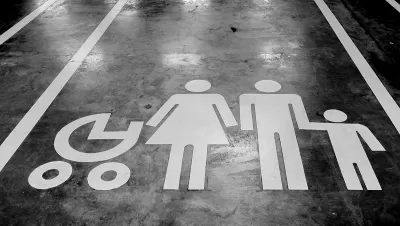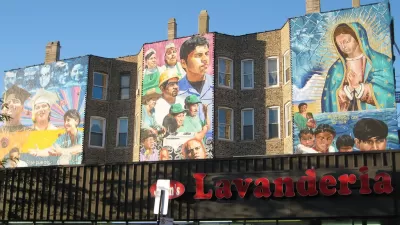A growing number of signs show major shifts in U.S. population growth—most emerged before the pandemic.

"Growth in the number of U.S. households during the 2010s slowed to its lowest pace in history, according to a Pew Research Center analysis of newly released 2020 census data."
An article by Richard Fry, Jeffrey S. Passel, and D'vera Chon shares news of the new analysis, explaining both causes and consequences for the data. Starting with causes, the article lists several long-term demographic trends:
- "A fundamental driver of household growth is population growth. The population residing in households (that is, those who do not live in group quarters such as dorms, prisons or nursing homes) grew by only 7.5% in the last decade, the slowest population growth since the 1930s."
- "Beyond population growth, another demographic trend also slows growth in the number of households: Multigenerational family living has been increasing. In 2016, 20% of the U.S. population lived in multigenerational family households, up from 12% in 1980."
Other trends like the share of Americans living alone are also explained in the article.
The article is less specific about the consequences of these trends, but predicts that the subpar growth of households will impact the demand for housing and durable goods like furniture and appliances. "The slowdown in economic growth over the 2010s is partly a reflection of weak household formation and low levels of home building," according to the article.
More from Planetizen on 2020 Census data findings:
- Where New Asian Residents Are Transforming New York City (October 2021)
- Census Data Reveal Increasing Density in the U.S.—Reversing a Two-Decade Trend (September 2021)
- News Brief: Census 2020 Population Data (August 2021)
- 2020 Population Growth Rates for the 50 Biggest U.S. Cities (July 2021)
FULL STORY: U.S. household growth over last decade was the lowest ever recorded

Alabama: Trump Terminates Settlements for Black Communities Harmed By Raw Sewage
Trump deemed the landmark civil rights agreement “illegal DEI and environmental justice policy.”

Study: Maui’s Plan to Convert Vacation Rentals to Long-Term Housing Could Cause Nearly $1 Billion Economic Loss
The plan would reduce visitor accommodation by 25% resulting in 1,900 jobs lost.

Why Should We Subsidize Public Transportation?
Many public transit agencies face financial stress due to rising costs, declining fare revenue, and declining subsidies. Transit advocates must provide a strong business case for increasing public transit funding.

Paris Bike Boom Leads to Steep Drop in Air Pollution
The French city’s air quality has improved dramatically in the past 20 years, coinciding with a growth in cycling.

Why Housing Costs More to Build in California Than in Texas
Hard costs like labor and materials combined with ‘soft’ costs such as permitting make building in the San Francisco Bay Area almost three times as costly as in Texas cities.

San Diego County Sees a Rise in Urban Coyotes
San Diego County experiences a rise in urban coyotes, as sightings become prevalent throughout its urban neighbourhoods and surrounding areas.
Urban Design for Planners 1: Software Tools
This six-course series explores essential urban design concepts using open source software and equips planners with the tools they need to participate fully in the urban design process.
Planning for Universal Design
Learn the tools for implementing Universal Design in planning regulations.
Smith Gee Studio
Alamo Area Metropolitan Planning Organization
City of Santa Clarita
Institute for Housing and Urban Development Studies (IHS)
City of Grandview
Harvard GSD Executive Education
Toledo-Lucas County Plan Commissions
Salt Lake City
NYU Wagner Graduate School of Public Service




























